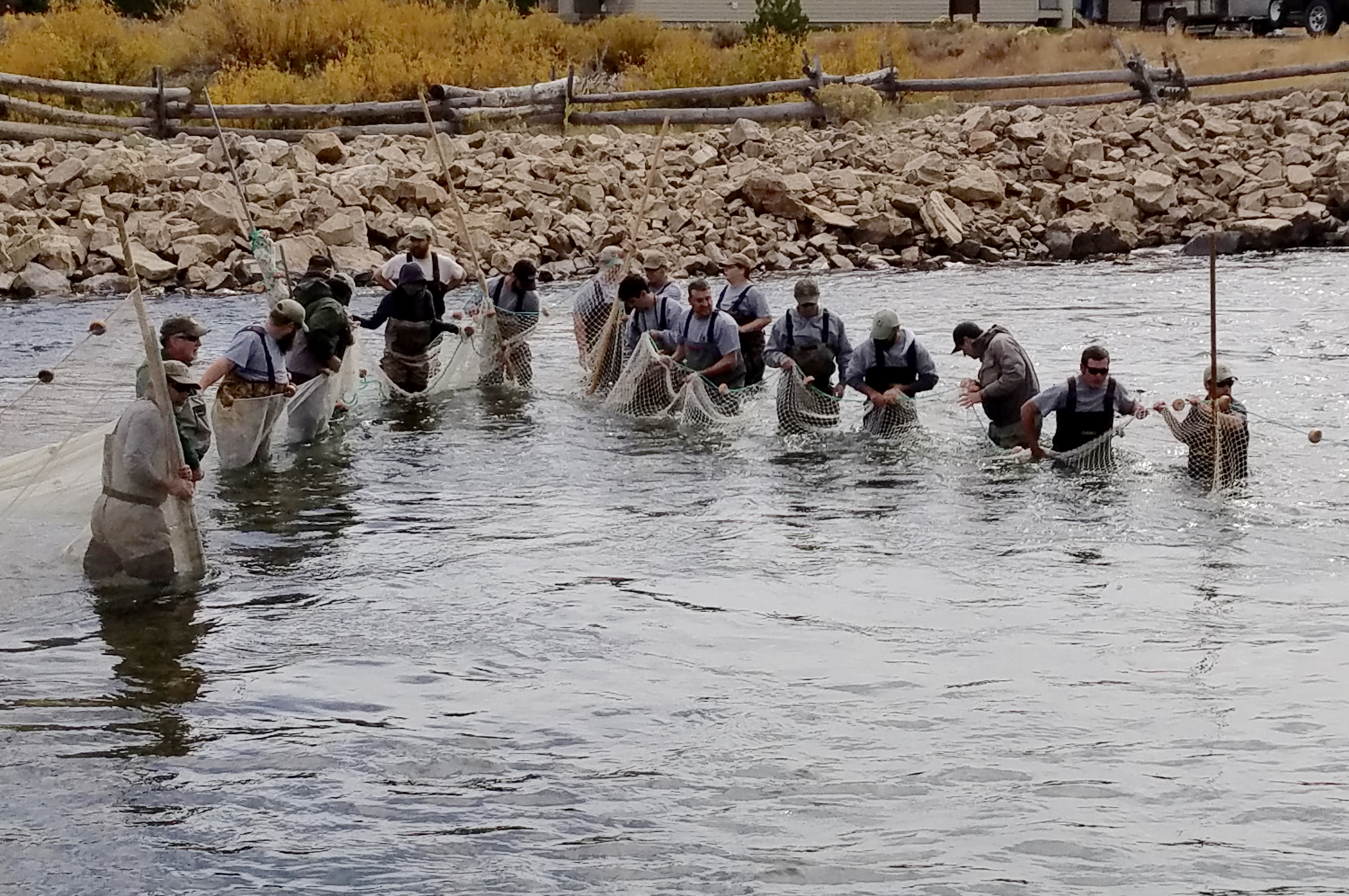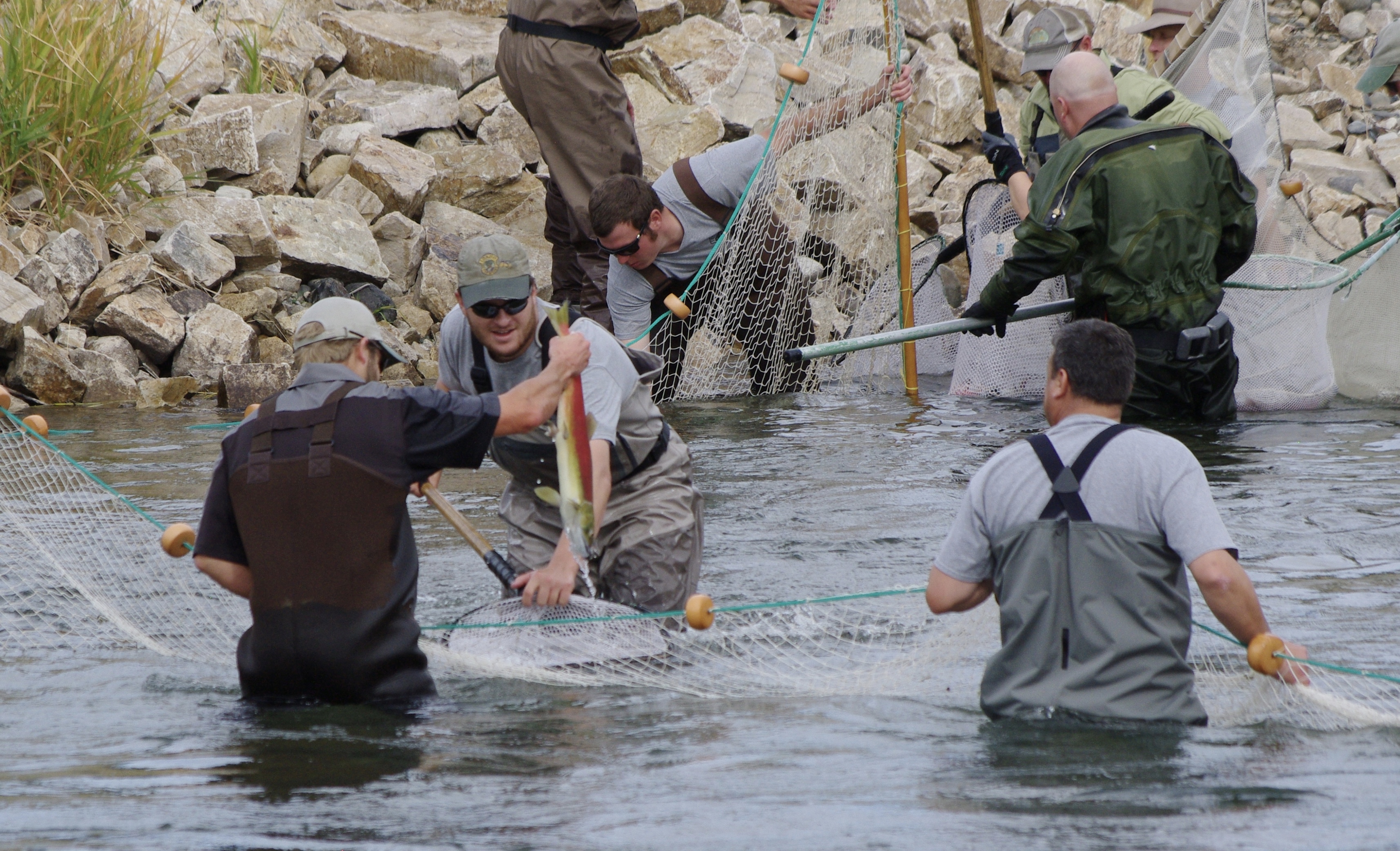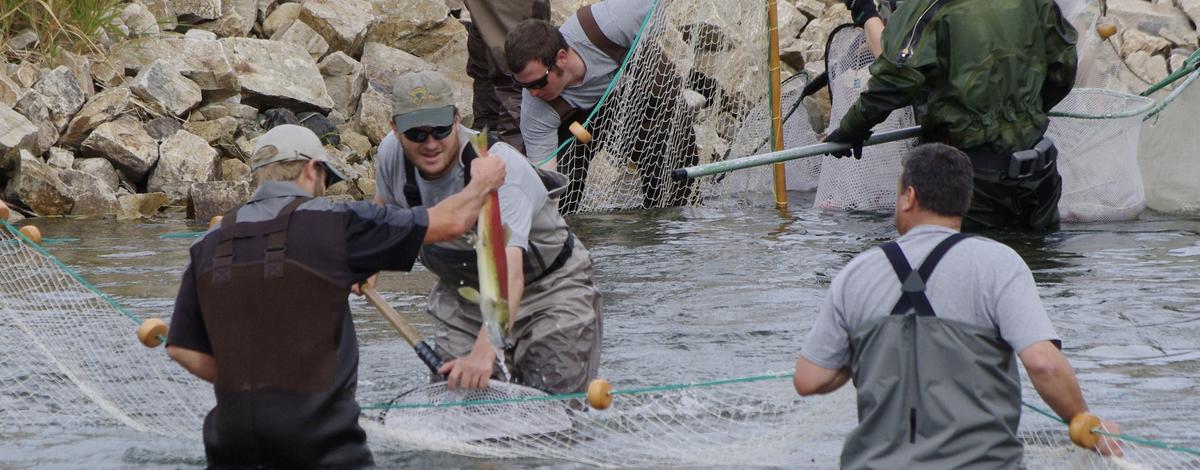
It wasn’t your typical Idaho roundup; there were no horses, cowboys, or even cows, but it was important for one of Idaho’s most valuable wildlife species: sockeye salmon.
Idaho Fish and Game personnel and volunteers recently held their annual sockeye roundup on the Salmon River near Stanley when about 25 people waded downstream from the Sawtooth Hatchery, spread a net and carefully herded 23 sockeye into waiting transport vehicles.
Every year, some returning sockeye pause downstream rather than returning all the way to the hatchery, and they needed a little push to cross the finish line on their 900-mile journey from the Pacific to Idaho’s high country at 6,500-feet elevation in the Sawtooth Basin.
Getting every last fish not only contributes more parents to produce the next generation, it allows sockeye managers to see what’s working in the sockeye recovery program. With testing, biologists can tell from which genetic line the fish originated, which helps them better understand which fish survive at the highest rates.
Since the days of Lonesome Larry, a single fish that returned to Idaho in 1992, a captive broodstock program was started with 16 adult sockeye that returned from the ocean, along with juveniles and residuals captured from Redfish Lake, which jump started the modern era of Idaho’s sockeye.
This year’s return of 567 fish is slightly below the 10-year average of 664 fish, but a huge improvement over previous decades. As late as 2007, only four sockeye returned.

“It’s been an encouraging year,” said Dan Baker, Eagle Hatchery Manager. “We’re continuing to move in the right direction.”
There’s enough sockeye this year to let some spawn in the wild, spawn others in hatcheries and release their offspring to migrate to the ocean, and keep others in captivity to provide a genetic bank that safeguards against natural catastrophes, such as lethal river conditions.
Fish and Game also will collect enough eggs this year to completely fill the Springfield Hatchery for the first time. This will produce approximately one million smolts that will be released and migrate to the ocean in 2018. The hatchery was completed in 2013, and is dedicated solely to raising sockeye.
With this year’s returning and the captive adults, Fish and Game has released over 1,000 spawners into Redfish Lake, and another 100 into nearby Pettit Lake.
This year’s run was a vast improvement over last year both in numbers and percentage of fish successfully completing their migration. In 2015, unseasonably warm water created lethal conditions in the rivers, so Fish and Game trapped and hauled 35 fish from the Snake River to the Eagle Hatchery to supplement those that naturally returned.

